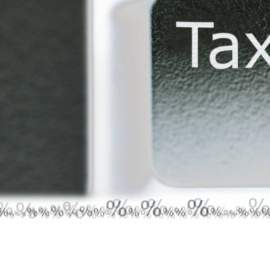
A Full Guide to FAFSA

What is FAFSA?
The FAFSA form, or Free Application for Federal Student Aide may be downloaded and printed from the United States Department of Education website by going to www.fafsa.ed.gov. The FAFSA form is a free application created by the United States Department of Education that allows the federal government to assess whether or not an applicant for student aid, either in the form of grants or loans, is eligible to recieve funding from the United States government for their education. The FAFSA form is used for all forms of funding for post-secondary education including: bachelors degrees, masters degrees, juris doctors, among others.
The FAFSA form will require you to input information including your income,and if you are a dependent, your families income; the cost of attendance of the educational institution; your status as a full time or part time student; and whether you will be attending post-secondary education for the whole year or on a semester basis.
By filling out the FAFSA form, the department of education will properly be able to assess your need based on your, and your families, income. The eligibility under FAFSA will also analyze your expected family contribution which is calculated based on the number of current college students in the household, household income, and your families net assets (not including 401ks).
One exception to requiring a certain need to qualify for funding under the federal loans through FAFSA is if you are a child of a member of the armed forces who has fought, and died, in either the war in Iraq or Afghanistan. This is limited to individuals who were 24 or younger at the time of their parents death and that death occurred during those conflicts at or after September 11, 2001.
In its current form, a FAFSA form will consist of 130 questions based on the student and families income and dependency. None of the questions address the issue of race, religion, or any other aspect that may be considered to insinuate any other motive other than need based.
What kind of loans am I eligible for under FAFSA
Your FAFSA form will allow you to apply for numerous kinds of loans and grants that are funded by the federal government. These include Pell Grants, Perkins Loans, Stafford Loans, and Federal Work Study programs.
Pell Grant
The Pell Grant A Pell Grant is a government grant furnished by the United States Department of Education that helps students who could not normally afford the luxury of a secondary education, the opportunity to attend college or, in some cases, post-bachelors degree education. The federal Pell Grant helps 5.4 million individuals pay for college every year through the United States Department of education, which allots $17 billion a year towards the funding of Pell Grants.
Prior to the 2011 amendmentsfPell Grants would issuie a maximum of $5,550 dollars per student. As of the 2011 amendments a student who meets the hardship requirements and is given Pell Grants may receive $4,705. The amendment stripped funding from the department of education by $5.7 billion and due to that there has been a decrease in per student funding of $845 per student, with some students losing their status altogether.
Stafford Loans
If the funding from a Pell Grant is not enough to meet your education requirements you may also use your FAFSA form to apply for Stafford loans.
Stafford loans are loans that are sponsored by the federal government through lending institutions. The way they work is that you apply for a loan, through FAFSA, and upon your approval you will be allotted a certain amount of funds for you education. The benefit of taking Stafford loans is that they are guaranteed by the federal government . In that way the lending institution is going to allow you a lower interest rate because you are backed by the United States government, which is as close to a guarantee of repayment as anything.
There are two main types of Stafford loans. The first are subsidized and the second are not. The subsidized loans are the first type you will want to get from the federal government’s department of education, through Sallie Mae. The amount that will be allotted per student through subsidized loans is low, but usually allows around $12,000 per year. The benefit of these loans is that they do not garner interest until the completion of your education. Federal Stafford Loans are subsidized in that the interest that accumulates while you are pursuing your education is payed for by the federal government. or example, if you borrow $36,000 over 3 years for your college education starting in 2011 you will not be charged interest for the school years ending in 2012, 2013, and 2014., but upon your graduation in 2014, or if you leave your educational institution before graduation, then your interest will start accumulating immediately.
In contrast, unsubsidized Stafford oans through the federal governments department of education will begin accumulating interest upon the time that your loans are dispersed to you. Because of this reason it is always beneficial for students to avoid unsubsidized loans through either the federal government department of education or through a private lending institution.
The interest rates that are associated with stafford loans are relatively low. Due to the guarantee of repayment by the federal government a lending institution will charge a lower interest rate and the loan is almost guaranteed to be granted if you meet the requirements. Under c.urrent regulations the annual percentage rate of interest for a federal subsidized stafford loan is 6.6% annual interest for those students who are enrolled in higher education for at least half time. This is going to change under the 2011 amendments under the Budget Control Act of 2011. Under the Budget Control Act new, starting in July 2012, interest rates for both federally subsidized and unsubsidized stafford loans will be fixed at 6.8% annual interest. In addition, under the Budget Control Act, individuals who are seeking graduate or professional degrees will be ineligible for subsidized loans as of July 1, 2012.
Upon the completion of your education you will be required to repay your stafford loans. Upon graduation, or dropping below half-time, you will be allotted an initial deferment of 6 months. This is called the grace period. During the grace period you will not be required to begin repaying your loans, however, the interest upon your loans, even those that are subsidized will begin to take effect. Once your 6 month grace period is over you will be required to start paying monthly installments to satisfy your loans. The default standard is repayment over a 10 year period. This may be altered upon request and many times you will be permitted to stretch your repayment period up to 30 years. Granted, you will end up paying more in the long run but it is beneficial for those individuals right out of college who are not making a high salary. Once the grace period is over you must begin repaying your stafford loan. Failure to do so will put you in default and prevent you from receiving future government loans and severely damage your credit. If you are in a situation where it is impossible for you to make payment then you may apply to the federal government for a deferment based on hardship.
Perkins Loans
In addition to applying for a Pell Grant and Stafford Loans through the federal government you will also want to use your FAFSA form to apply for a Perkins Loan. A Perkins Loan operates in much the same way as a Federally subsidized stafford loan in that it is a subsidized loan guaranteed by the federal government. The difference is that where a stafford loan operates by going through a private lending institution to gather funding for the loan, a Perkins Loan takes its funding directly from your educational institution. So the federal government is borrowing money from your university and guaranteeing repayment upon graduation, or the dropping of the student from at least half time status. Federal Perkins loans have an interest rate of 5% per year that begins to accumulate at the time of graduation, or dropping below half time registration. Prior to that the federal government, through the department of education, will pay the interest on the loan. A Perkins Loan, through completion and approval of a FAFSA form, will guarantee an undergraduate student as much as $5,500 per year with a lifetime allowance of $27,500; and post-graduate, and professional, students up to $8,000 per year with a lifetime allowance of $60,000. The default provision for a Perkins loan is that the loan will be repaid over the course of 10 years but that may be altered upon request to a longer period of time with lower payment plans. Be wary of doing this because, just like stafford loans, the longer the period of payment the more total money you will be repaying due to interest accumulation. Perkins, loans also allow a 9 month grace period upon the completion of a degree, or falling below half time status.
Work Study Program
In addition to loans and grants a student may apply for federal work study programs through their FAFSA form. Federal work study is a form of federal aide that allows a student to work in the community or in their field of study part time in conjunction with their education to help pay for their education. Through the FAFSA form a student who meets the financial needs requirements may be placed in a federal work study program in which the federal government will pay up to 75% of the salary that the student garners through their work study program. In this way, many educational institutions open up work study positions to students where, under normal situations, they would be offered to others for lower pay. Many educational institutions require that a student maintain a certain grade point average in order to be eligible for federal work study programs. If that students grade point average falls below a certain amount they may lose their eligibility for that semester, school year, or for the remainder of their time at that educational institution.
A prudent applicant using a FAFSA form should apply for all forms of student loans and grants, if applicable. If accepted for all you should only accept funding on a need based analysis and pick which funding is best for you. If offered you should always accept a Pell Grant. If you need loans you should order them in the following way: Federal Perkins Loan, Federal Subsidized Stafford Loan, and, only if you need it, Federal Unsubsidized Stafford loan. By looking at the interest rates, repayment dates, and the interest accrual of each loan you will understand better why this is the appropriate way to go about accepting funding through FAFSA.How to fill out my FAFSA application
When filling out your FAFSA form you will need to gather a number of documents and information including financial documents and identifiication.
The first section of the FAFSA form will be about your identification. You should have all information dealing with your identity at hand. This includes your social security number, state of residence, driver’s license information, educational institution, and marital status.
In the second section of the FAFSA will deal with your dependency status. If you are claimed as a dependent of your parents or another, whether you have dependents and what your income is.
The third section of the FAFSA form will deal with your parents financial status. This is , of course, of you are being claimed as a dependent by your parents. You will nee financial information on your parents as far as income tax returns, assets, the number of dependents they have and how many of them are enrolled in higher education.
The fourth part of the FAFSA application will deal with your financial status. If you are claiming youself as an independent, head of household or other non-dependency status you will need to include financial information assessing this. This includes the number of dependents you are claiming, your income, assets, marital status, are you the head of household, etc.
Finally, once your FAFSA application is complete you will either mail or submit the FAFSA application online. Most universities require that FAFSA applications be received between March 1st of May 1st prior to the school year that the applicant is applying for. The federal cutoff for FAFSA applications to be submitted is June 1st.
NEXT: Financial Aid





















